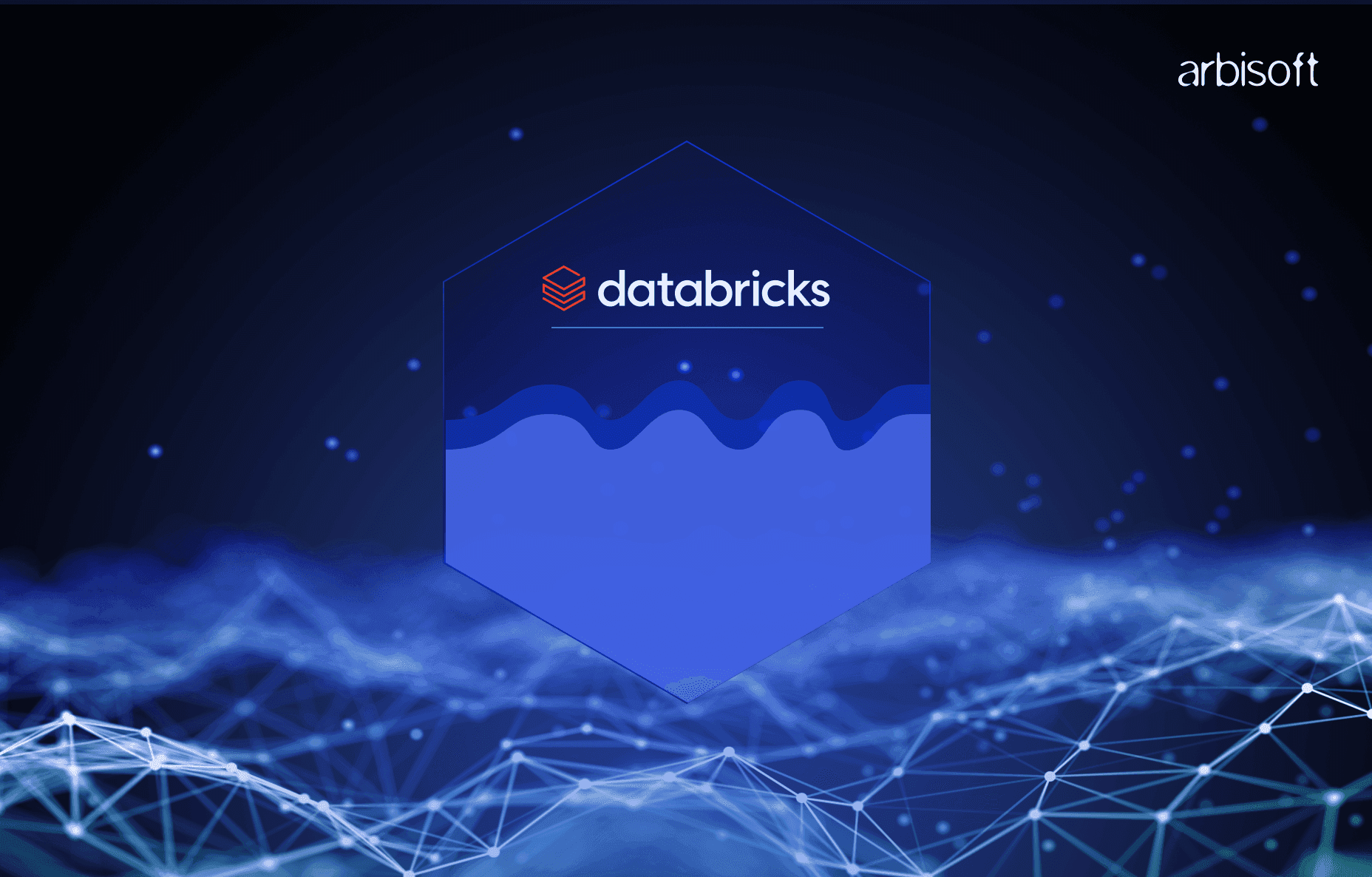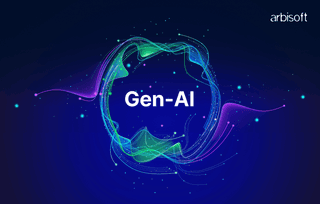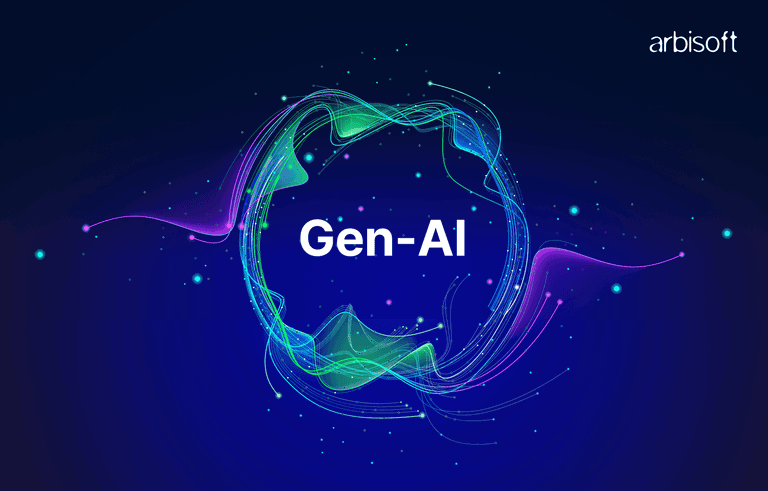We put excellence, value and quality above all - and it shows




A Technology Partnership That Goes Beyond Code

“Arbisoft has been my most trusted technology partner for now over 15 years. Arbisoft has very unique methods of recruiting and training, and the results demonstrate that. They have great teams, great positive attitudes and great communication.”
The Future of Data Platforms: Why Databricks Lakehouse is Winning

Introduction: A Shifting Data Paradigm
Companies everywhere are dealing with huge amounts of data—from regular business records to unstructured documents, live data from sensors, videos, and more. All of it needs to be understood quickly and used smartly. But the old systems we used to rely on weren't built for this kind of pressure. They're now struggling to keep up.
Let’s face it: most companies spend up to 80% of their analytics budget just to prepare data, not to analyze it. Data engineers are stuck trying to manage a patchwork of disconnected tools. As a result, business teams often wait weeks to get insights they should be getting in minutes.
This growing challenge is forcing companies to rethink how they manage and use data. The future lies in a single, smart platform that handles everything—from storage and processing to machine learning—without the gaps. Databricks is leading this shift with its powerful Lakehouse architecture. It's not just another tool; it’s a new way of thinking that’s changing the game entirely.
Surviving the Modern Data Maze
Why traditional systems are breaking under modern data demands.
Businesses today are surrounded by more data than ever, and older systems are struggling to keep up. From disconnected tools to costly maintenance, these challenges are forcing companies to rethink their entire data approach.
Data in Every Shape and Size
Structured, semi-structured, unstructured—it's all coming at once.
Companies today don’t just manage spreadsheets and tables—they handle a wide mix of data types. There’s structured data like transactions, semi-structured formats like JSON, and unstructured content like emails, images, videos, and chat logs. Add in live streams from IoT devices, and it’s clear how quickly things get complicated.
Global data is expected to reach 175 zettabytes by 2025, up from just 33 zettabytes in 2018. While traditional data warehouses are great at handling structured data, they struggle with the rest. On the other hand, data lakes can store anything, but they lack the speed and controls that modern businesses need for reliable decisions.
The Need for Real-Time Insight
Delayed decisions cost more than just time—they cost opportunity.
In today’s world, quick decisions aren’t optional—they’re a competitive edge.
Retailers want to see stock levels instantly. Banks need to catch fraud in real time. Manufacturers rely on fast alerts to prevent machine downtime. But many systems still rely on batch processing, which means insights arrive hours—or even days—too late.
According to IDC, global data creation is growing at 10x the rate seen in past years, making real-time data processing not just a nice-to-have, but a necessity.
The AI Disconnect
When your AI tools can’t talk to your data, innovation slows down.
Machine learning and AI are no longer experiments—they’re business essentials. But in many companies, the tools used for AI are completely separate from the main data systems. That means data has to be moved manually, tracked separately, and prepared again and again.
Some reports show that data scientists spend 60% to 80% of their time just preparing data instead of building models. This disconnect leads to slower innovation and wasted effort.
The Cost of Complexity
Too many tools, too much overhead, not enough return.
Running multiple data systems—lakes, warehouses, real-time pipelines, ML environments, dashboards—adds up quickly. Each one has its own infrastructure, security layers, and team of experts.
Studies suggest that large companies lose an average of $104 million per year due to data inefficiencies and poor integration. And the global enterprise data management market is projected to grow from $97 billion in 2023 to over $120 billion by 2025—a reflection of just how much is being invested to fix the problem.
Growing Pressure Around Data Governance
Stricter rules, higher risks, and disconnected systems don’t mix well.
Data privacy laws like GDPR and CCPA require organizations to know where their data is, who accessed it, and how it’s being used. But when data lives in different places without a shared governance model, meeting these rules becomes tough.
This increases compliance risks and puts extra pressure on IT and legal teams to manually fill the gaps.
Why It All Matters
Being data-driven isn’t just a goal—it’s a necessity.
These aren’t just technical issues. They’re business blockers. If companies want to be truly data-driven, they need more than quick fixes. They need a new kind of platform—one that simplifies the stack, speeds up insights, and prepares them for a future powered by AI.
What Exactly Is a Lakehouse?
A smarter way to handle all your data—without choosing between speed and flexibility.
In the past, companies had to make a difficult choice: should they go with the flexibility of a data lake, or the speed and structure of a data warehouse? The Lakehouse architecture solves this by combining the best of both worlds into a single, powerful platform.
Instead of juggling multiple systems, the Lakehouse enables you to store, process, and analyze all types of data—structured, semi-structured, or unstructured—in a single location. It’s fast, flexible, and built for modern business needs.

The Brains Behind the Architecture
Built on cloud storage, powered by smart design.
At its core, a Lakehouse uses cloud-native object storage—the same kind you’d find in leading cloud providers—but adds a smart layer of metadata, transactions, and indexing on top.
This allows:
- ACID transactions for reliability and consistency
- Schema enforcement to prevent bad data
- Time travel so you can query past versions of your data
- Schema evolution to adapt as your data changes
These features used to be available only in expensive data warehouses, but Lakehouse brings them to open, flexible cloud storage.
One Platform for All Your Workloads
No more silos. One copy of the data. Multiple uses.
One of the biggest strengths of the Lakehouse is unification. With older systems, companies needed different tools for different tasks—dashboards in one system, machine learning in another, real-time streaming in yet another.
With the Lakehouse, all these workloads can run on the same data:
- Data scientists can train ML models
- Business analysts can build dashboards
- Engineers can stream live events
- Teams can run batch jobs and reports
This reduces duplication and removes the pain of keeping multiple systems in sync.
Built on Open Standards
No vendor lock-in. Full control.
Lakehouse platforms are built on open formats like Delta Lake, Apache Parquet, and Apache Spark. This means:
- You’re not stuck with one vendor
- You can switch tools or clouds anytime
- You can integrate with the tools you already use
This openness also makes it easier to work in hybrid or multi-cloud environments—something 90% of enterprises aim to support by 2025.
Big Savings, Less Complexity
Smaller stack. Fewer tools. Bigger impact.
Running separate systems for storage, analytics, and machine learning can be expensive and hard to maintain. With a Lakehouse, you combine these into one platform.
This simplification leads to:
- Less data duplication
- Fewer data pipelines to manage
- Lower cloud costs
- Fewer tools to secure and govern
Many organizations report saving between 40% to 70% in infrastructure and maintenance costs after switching to a Lakehouse model.
Not Just an Upgrade—A New Way Forward
The Lakehouse isn’t just a better version of what came before—it’s a new way of thinking about data platforms. It’s designed for a world where AI, real-time insights, and cloud-scale workloads are the norm.
For modern organizations that want to stay ahead, the Lakehouse offers a platform that’s open, powerful, and future-ready.
Why Databricks is Fueling the Lakehouse Revolution
Inventors, not imitators—Databricks built the Lakehouse from the ground up.
Databricks didn’t just adopt the Lakehouse model—they created it. As the minds behind Apache Spark and Delta Lake, they’ve consistently anticipated what modern enterprises need: a platform that combines data engineering, analytics, AI, and governance into a unified experience. With bold innovation and sharp execution, Databricks is setting the pace for the data industry.

Delta Lake: Rock-Solid Data at Scale
Open, fast, and reliable—everything your data lake should be.
Delta Lake powers the Lakehouse with reliable storage and transactional integrity. It transforms raw object storage into a trusted layer with ACID transactions, schema enforcement, and version control, closing the gap between traditional data lakes and modern warehouses.
Key performance facts:
- In internal benchmarks, Delta Lake 3.0 shows up to 56% faster MERGE performance, especially in update-heavy workloads.
- Compared to older formats, Delta provides 3–10× better performance for typical query patterns.
- Built-in time travel allows users to query previous snapshots—essential for audits, debugging, and historical reporting.
It’s not just reliable—it’s fast, flexible, and open.
Photon Engine: High-Speed Queries at Cloud Scale
Built in C++, optimized for performance, and ready for real-world workloads.
Photon is Databricks’ native query engine, built from scratch in C++ to take full advantage of modern hardware and cloud storage.
What it delivers:
- Real-world use cases show 3× to 8× speed improvements over traditional Spark engines.
- Vectorized query execution processes batches of data instead of rows, maximizing CPU efficiency.
- Adaptive query planning continuously learns and improves performance over time.
Photon was designed for one thing: blazing-fast analytics at cloud scale, across structured and semi-structured data.
Unity Catalog & Enterprise-Grade Governance
Track everything. Secure everything. Stay compliant everywhere.
Data governance is critical in today’s regulated environment, and Unity Catalog delivers full control without slowing teams down.
Key capabilities:
- Fine-grained access controls at the table, column, and row levels.
- Automatic lineage tracking that maps every transformation, query, and AI model interaction.
- Cross-cloud consistency, so governance policies stay in sync across AWS, Azure, and GCP.
From finance to healthcare, organizations rely on Unity Catalog to enforce policy and build trust in their data.
ML & AI Workflows—From Raw Data to Real Deployment
Data science and AI done right—with no pipeline pain.
Databricks is the only platform that natively supports the full machine learning lifecycle—no jumping between systems or managing fragile integrations.
Included out of the box:
- MLflow for experiment tracking, model registry, and deployment.
- AutoML that accelerates time-to-value for teams of all skill levels.
- Collaborative environments where data engineers and scientists work in Python, R, Scala, or SQL—on the same data.
- Built-in support for generative AI patterns, including fine-tuning large language models and retrieval-augmented generation (RAG).
From experimentation to production, everything happens in one place.
Serverless Simplicity: Scale Smarter, Not Harder
No clusters to manage. No resources wasted. Just results.
Databricks Serverless takes away the complexity of infrastructure. It automatically provisions, scales, and shuts down compute based on real demand.
Impact by the numbers:
- 20% to 40% cost savings reported by organizations after moving from fixed clusters to serverless.
- Instant start times for SQL and notebook workloads.
- Zero manual configuration—engineers focus on insights, not ops.
This is performance and cost control, without the tradeoffs.
Built for Multi-Cloud. Committed to Openness.
Portability, flexibility, and choice—baked into the platform.
Databricks runs seamlessly across AWS, Azure, and Google Cloud, giving enterprises the freedom to choose the cloud strategy that fits their needs.
It also supports:
- Open table formats like Delta Lake, Apache Iceberg, and Apache Hudi.
- Full interoperability with BI tools, data catalogs, orchestration systems, and more.
Whether you’re standardizing across teams or preparing for long-term flexibility, Databricks ensures your data stays accessible, portable, and future-proof.
Why It Matters
This isn’t just a platform upgrade—it’s an enterprise advantage.
Switching to Databricks Lakehouse means:
- Faster time-to-insight: Analytics and ML run 3× to 12× faster
- Stronger data integrity: ACID compliance and lineage by default
- Lower total cost of ownership: Up to 70% reduction from consolidating systems
- Simpler architecture: One platform instead of five disconnected ones
- Cloud flexibility: No lock-in, no limits
Final Thought: A Platform Built for What’s Next
Databricks didn’t just build the Lakehouse—they made it work for real-world business. Whether you’re modernizing legacy systems, scaling your AI operations, or preparing for a multi-cloud future, Databricks offers the performance, governance, and flexibility to lead, not follow.
This is the turning point for modern data platforms. And Databricks is leading the way.
Real-World Use Cases: Lakehouse in Action
From finance to healthcare, the Databricks Lakehouse powers real transformation.
Databricks isn't just a platform for theory—it’s delivering real business value across industries. Here's how some of the world’s leading organizations are using the Lakehouse to solve complex data challenges with measurable impact.

Financial Services: Smarter, Faster Risk Management
Companies: HSBC, Nasdaq, TD Bank
A global investment bank unified its risk systems across trading and operations using Databricks. Previously, risk calculations were done overnight. With the Lakehouse, they moved to near-real-time insights, helping teams respond faster to market changes.
Key outcomes:
- Reduced reporting delays
- Improved data accuracy
- Streamlined infrastructure
Retail: Real-Time Personalization at Scale
Companies: H&M, Walgreens, Columbia Sportswear
Retailers use Databricks to combine customer behavior, pricing, and inventory data, powering more accurate recommendations, dynamic pricing, and better promotional timing.
Key outcomes:
- Faster, more personalized customer experiences
- Improved marketing response
- Increased conversion rates
Healthcare: Accelerating Research Timelines
Companies: Regeneron, GSK, Roche
Pharma and life sciences firms use Databricks to integrate genomic, clinical, and research data, cutting data prep time and enhancing collaboration between scientists and analysts.
Key outcomes:
- Faster data preparation
- Scalable research analysis
- Shortened R&D cycles
Manufacturing: Predictive Maintenance at Scale
Companies: Honeywell, Hitachi, Siemens
Industrial leaders use the Lakehouse to monitor IoT sensor data and predict equipment issues before they happen, reducing downtime and optimizing maintenance.
Key outcomes:
- Earlier fault detection
- Reduced unplanned downtime
- Better resource allocation
Media & Entertainment: Smarter Content Planning
Companies: Showtime, Warner Bros. Discovery, ViacomCBS
Streaming platforms analyze viewer behavior, content metadata, and cultural trends to improve recommendations and guide content investment decisions.
Key outcomes:
- Improved audience engagement
- Data-driven content strategy
- More efficient content spend
Takeaway
From real-time insights to AI-powered workflows, the Databricks Lakehouse is helping organizations across industries simplify their architecture, accelerate innovation, and make better decisions faster.
Databricks vs. The Competition
How Databricks stands apart in the modern data platform race.
The data platform space is crowded with strong contenders, each built with a different philosophy. Here's how Databricks leads by delivering unified, flexible, and future-ready capabilities.

Snowflake vs. Databricks
Structured Strength vs. Unified Platform
Snowflake is optimized for traditional BI and structured data but requires add-ons for ML, streaming, and unstructured workloads.
Databricks offers all of this in a single Lakehouse platform, enabling analysts, engineers, and data scientists to work on the same data, without switching tools.
- Fewer integrations
- Lower data movement overhead
- More stable cost across mixed workloads
Databricks is projected to reach a $3B revenue run rate by 2025, fueled by growing demand for unified architectures.
Amazon Redshift vs. Databricks
Legacy Warehouse vs. Cloud-Native Design
Redshift pioneered cloud data warehousing but retains a traditional architecture. While it handles BI well, features like lake access are bolted on.
Databricks was built for the cloud from day one, scaling easily across batch and streaming, structured and unstructured workloads.
In performance tests like TPC‑DS (100 TB), Databricks delivered over 2× faster query speeds than prior leaders, with better cost efficiency.
Google BigQuery vs. Databricks
Serverless Simplicity vs. Customizable Control
BigQuery excels at serverless SQL analytics but limits workload customization. ML integration requires separate services, creating silos.
Databricks provides the best of both worlds:
- Serverless for analysts
- Custom compute for engineers
- Built-in MLflow & AutoML for end-to-end machine learning without switching platforms
The Open Source Advantage
No lock-in. Full control.
Databricks leads with open formats like Delta Lake, Apache Spark, Parquet, Iceberg, and Hudi—ensuring portability, flexibility, and future-proof architecture.
- Multi-cloud ready
- Compatible with industry tools
- Driven by open community innovation
Bottom Line
Challenge | Databricks | Competitors |
| Unified workloads | ✅ SQL, ML, streaming | ❌ Requires multiple systems |
| ML & AI Integration | ✅ Native | ❌ Add-ons or external tools |
| Performance & Cost | ✅ Predictable across loads | 🚩 Varies with use scenarios |
| Cloud Flexibility | ✅ Multi-cloud built | ❌ AWS/Azure/GCP locked |
| Open Standards | ✅ Leading open source | ❌ Often proprietary formats |
Databricks stands out by offering faster performance, simpler architecture, AI-first capabilities, and cloud portability, making it the standout choice in the Lakehouse era.
Conclusion: Why the Lakehouse (and Databricks) Wins
The future of data isn't stitched together—it's unified.
The shift to modern data platforms isn't about patching old systems—it's about rethinking how we handle data, analytics, and AI at their core. The Lakehouse architecture marks this shift, and Databricks is leading the way, turning vision into a production-level reality.

A Smarter Architecture
The Lakehouse model removes long-standing trade-offs. No more choosing between the flexibility of data lakes and the performance of data warehouses. No more juggling tools for BI, ML, or streaming. With everything under one roof, teams move faster, with less friction, and more innovation.
Economic Advantage
Databricks Lakehouse helps reduce total cost of ownership by 40–70% compared to traditional multi-tool setups. The savings go beyond infrastructure:
- Less data duplication
- Simplified operations
- Increased developer productivity
As data volumes and complexity grow, these benefits only become more significant.
Built for What’s Next
From creating Apache Spark to defining the Lakehouse, Databricks has consistently delivered innovations before the market demanded them. Now, they’re doing the same with AI and GenAI, giving companies the tools to stay ahead, not catch up.
Market-Proven, Enterprise-Ready
Top companies across financial services, retail, healthcare, and beyond aren’t just testing Lakehouse—they’re using it to run mission-critical workloads. These aren’t pilot projects. They’re proof that unified platforms solve real, high-value problems.
Future-Proof by Design
Most importantly, the Lakehouse is built to evolve. Whether it’s adapting to new data types, enabling real-time use cases, or scaling AI across teams, Databricks provides a foundation that won’t need rethinking every few years.
The Bottom Line
The age of fragmented data platforms is ending. Unified architectures like the Databricks Lakehouse are delivering better performance, simpler operations, and long-term agility—all in one place.
The Lakehouse revolution isn’t coming—it’s already here.
The real question is: How soon will you capture the value it brings?
























